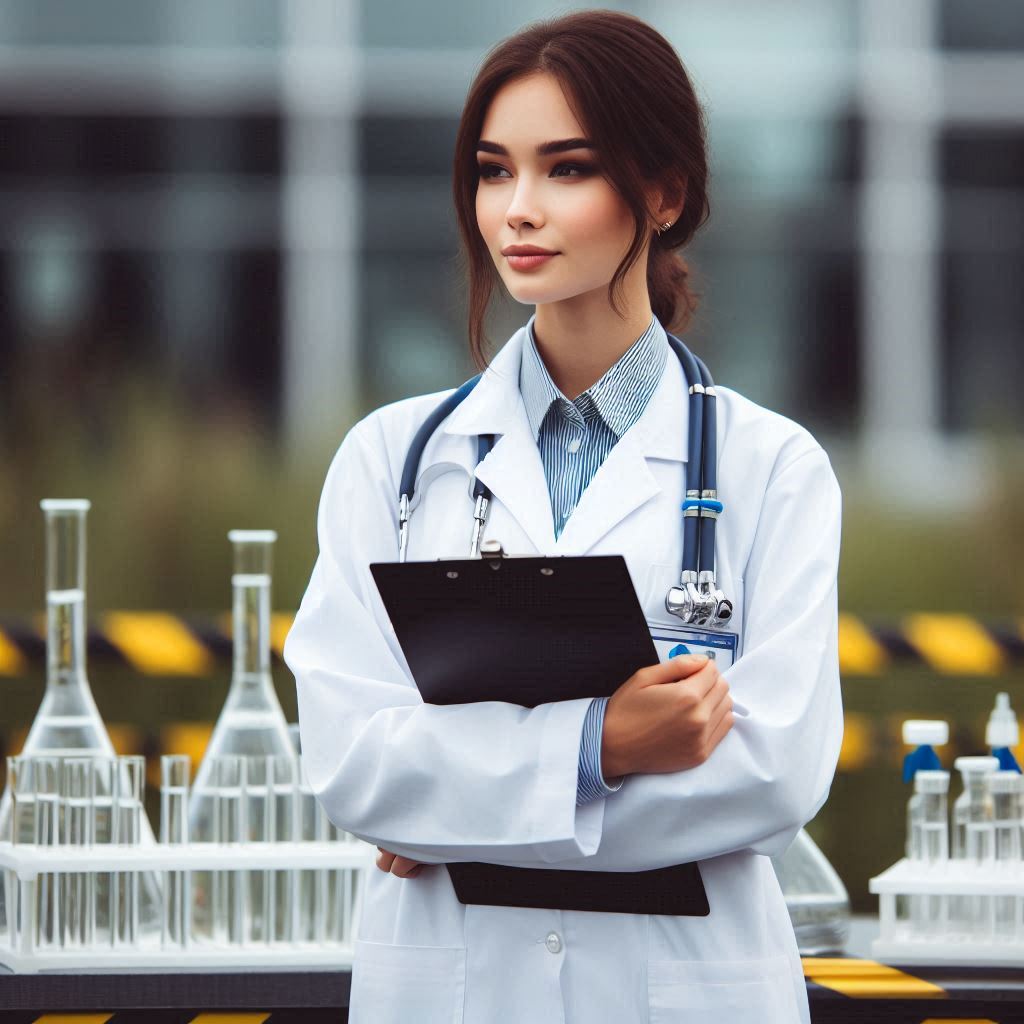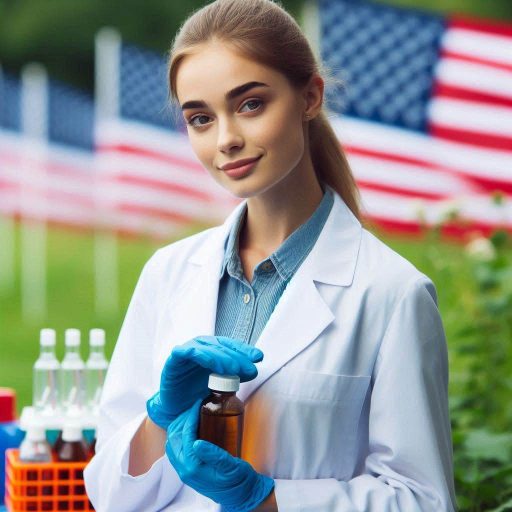Introduction
Toxicology testing evaluates the effects of substances on living organisms to determine their safety and potential risks.
This process involves various methods, including animal testing, in vitro assays, and computational models.
Each method helps researchers understand how chemicals can impact human health and the environment.
Advancements in toxicology testing methods are essential for improving accuracy and efficiency.
Traditional testing methods often rely on animal models, which can be time-consuming and costly.
Newer approaches, such as high-throughput screening and organ-on-a-chip technology, allow scientists to test multiple substances rapidly and effectively.
These innovations enhance the ability to predict human responses to chemicals, reducing the need for animal testing.
They also provide more relevant data on how substances affect specific biological pathways.
Improved testing methods lead to faster decision-making regarding product safety and regulatory compliance.
Moreover, advancements in toxicology testing promote environmental sustainability.
Researchers can assess the impact of chemicals on ecosystems more efficiently, helping to protect biodiversity.
By utilizing advanced techniques, toxicologists can ensure that new substances are safer for both humans and the environment.
The continuous improvement of toxicology testing methods plays a crucial role in enhancing public health and safety, ensuring that regulatory agencies can make informed decisions.
Traditional methods of toxicology testing
Overview of Traditional Methods Such as Animal Testing
Traditional toxicology testing methods primarily rely on animal testing.
Researchers often use various animal species to assess chemical safety.
Common species include rats, mice, rabbits, and dogs.
These animals serve as models to predict human responses to toxins.
In traditional studies, scientists expose animals to specific substances.
They observe for adverse effects over time to evaluate toxicity.
Researchers assess a range of endpoints, such as mortality, organ damage, and behavioral changes.
These methods have been crucial for understanding the potential hazards of chemicals.
Animal testing has a long history in toxicology research.
It has helped identify many toxic substances and their effects.
Regulatory agencies often require animal studies for chemical approval.
This ensures that new substances are safe for human use.
Despite their widespread use, animal testing methods have limitations.
Ethical concerns surrounding animal welfare have raised questions about their validity.
Many advocates argue against subjecting animals to potentially harmful experiments.
This ethical dilemma has prompted calls for alternative testing methods.
Limitations and Drawbacks of Traditional Methods
Traditional animal testing methods face several significant drawbacks.
First, the results from animal studies do not always translate to humans.
Biological differences can lead to inaccurate predictions of human toxicity.
Some substances may be harmless to animals but harmful to humans, and vice versa.
Second, animal testing can be time-consuming and costly.
Researchers must house and care for animals, which adds to overall expenses.
Conducting long-term studies requires significant resources and time.
This prolonged process can delay the development of new chemicals and products.
Third, traditional methods may not account for individual variability among humans.
Factors such as genetics, age, and pre-existing health conditions affect toxicity.
Animal models cannot fully replicate this human diversity.
Consequently, results may not accurately reflect human responses to exposure.
Animal testing raises ethical concerns about animal rights and welfare.
Many argue that it is inhumane to expose animals to potentially harmful substances.
This ethical stance has led to increased scrutiny of animal testing practices.
Some researchers advocate for replacing animal testing with alternative methods that do not involve living organisms.
Moreover, traditional methods often focus on acute toxicity rather than chronic effects.
Long-term exposure studies are essential for understanding the full impact of chemicals.
However, animal testing may not provide comprehensive data on chronic toxicity, leading to gaps in knowledge.
Lastly, regulatory reliance on animal testing can slow innovation.
The lengthy approval process for new chemicals can hinder advancements in various fields.
Traditional toxicology testing methods primarily involve animal testing, which has been instrumental in understanding chemical safety.
However, these methods face significant limitations and drawbacks, including ethical concerns, cost, and relevance to human health.
The push for advancements in toxicology testing methods continues as researchers seek alternatives that enhance safety while addressing ethical considerations.
Advancements in technology
Introduction of In Vitro Testing Methods
Advancements in toxicology testing methods have revolutionized the field.
Researchers now prioritize in vitro testing methods over traditional animal testing.
In vitro methods use cell cultures and tissues to assess toxicity.
These approaches offer more ethical and efficient alternatives to animal models.
In vitro testing allows for faster results, reducing the time needed for safety assessments.
Researchers can quickly evaluate the effects of chemicals on human cells.
This rapid turnaround enables industries to bring products to market more swiftly.
Regulatory agencies increasingly accept in vitro data, facilitating compliance with safety standards.
These methods also enhance the relevance of toxicity testing.
In vitro assays often use human-derived cells, providing more accurate results for human health risks.
This relevance is crucial for evaluating the safety of new pharmaceuticals and chemicals.
As a result, scientists can identify potential hazards before they reach consumers.
Moreover, in vitro testing reduces the overall costs associated with toxicity assessments.
Traditional animal testing can be expensive and time-consuming.
By utilizing in vitro methods, researchers can conserve resources and allocate funding more effectively.
This cost-effectiveness benefits both industries and regulatory agencies.
Regulatory guidelines have begun to incorporate in vitro testing methods.
Organizations like the OECD endorse these alternatives to animal testing.
These guidelines promote the validation and acceptance of in vitro data.
Consequently, more researchers adopt these innovative methods, advancing the field of toxicology.
Use of Human Cell-Based Assays for Toxicity Testing
Human cell-based assays are becoming essential tools in toxicity testing.
These assays utilize human cells to assess the potential toxicity of substances.
They offer advantages over traditional methods by reflecting human biological responses more accurately.
Using human cells allows researchers to evaluate the effects of chemicals on human physiology.
These assays can mimic various organs and systems, enhancing the relevance of the data.
For example, liver cell assays can predict how substances affect liver function.
Similarly, neural cell assays can assess neurotoxicity.
Human cell-based assays also enable high-throughput screening.
Researchers can test multiple compounds simultaneously, increasing efficiency.
This approach accelerates the identification of harmful substances and prioritizes safer alternatives.
As a result, industries can expedite product development while ensuring safety.
Furthermore, these assays support personalized medicine initiatives.
By utilizing patient-derived cells, researchers can tailor toxicity assessments to specific populations.
This personalization helps identify individuals who may be more susceptible to certain chemicals.
Consequently, human cell-based assays enhance public health and safety.
Technological advancements have improved the accuracy and reliability of human cell-based assays.
Innovations such as 3D cell cultures and organ-on-a-chip technologies enhance these testing methods.
These technologies create more complex and realistic models for evaluating toxicity.
Regulatory agencies increasingly recognize the value of human cell-based assays.
They encourage researchers to incorporate these methods into safety assessments.
By promoting these advancements, regulatory agencies help shape the future of toxicology testing.
Advancements in toxicology testing methods significantly enhance safety assessments.
The introduction of in vitro testing methods and the use of human cell-based assays revolutionize the field.
These innovations promote ethical practices, improve relevance, and support regulatory compliance.
As toxicology continues to evolve, these advancements will play a crucial role in protecting public health.
Read: Educational Path: Becoming a Geologist in the USA
High-throughput screening techniques
Explanation of High-Throughput Screening
High-throughput screening (HTS) is a powerful method in toxicology testing.
It allows researchers to rapidly evaluate thousands of compounds simultaneously.
This technique significantly speeds up the process of toxicity assessment.
Researchers use automated systems to conduct these tests efficiently.
HTS involves using microplate technology to test multiple samples at once.
Each microplate contains wells that hold different chemical compounds.
Researchers add biological samples to these wells to observe reactions.
The automation of this process reduces human error and increases throughput.
HTS can assess various biological responses to chemical exposure.
Researchers measure effects on cell viability, gene expression, and metabolic activity.
This broad approach enables scientists to gather extensive data quickly.
HTS also allows for the identification of potential toxic compounds early in the development process.
Furthermore, HTS is instrumental in drug discovery.
It helps identify lead compounds that may require further testing.
By screening large libraries of compounds, researchers can focus on those with promising effects.
This early identification can save time and resources in drug development.
Benefits of Using High-Throughput Screening in Toxicology Testing
High-throughput screening offers numerous benefits in toxicology testing.
One significant advantage is its efficiency.
Researchers can evaluate many compounds in a short timeframe.
This rapid assessment is crucial in today‘s fast-paced research environment.
Another benefit is cost-effectiveness.
Traditional testing methods can be expensive and time-consuming.
HTS reduces the costs associated with long-term testing and material usage.
Researchers can prioritize compounds for further testing based on HTS results.
HTS also enhances the accuracy of toxicity assessments.
By using standardized methods, researchers can minimize variability in results.
This consistency is essential for regulatory compliance and risk assessment.
HTS provides high-quality data that supports decision-making in toxicology.
Another advantage is the ability to identify novel toxicants.
HTS enables researchers to discover previously unrecognized compounds that may pose risks.
This capability is especially important as new chemicals are continually introduced into the market.
Moreover, HTS supports the 3Rs principle in research: reduction, refinement, and replacement.
Researchers can reduce the number of animals used in testing by employing HTS.
This approach aligns with ethical considerations in scientific research.
High-throughput screening also facilitates the integration of computational models.
Researchers can use bioinformatics tools to analyze HTS data.
This analysis helps predict potential toxic effects based on chemical structures.
By combining HTS with computational models, scientists can improve the predictive accuracy of toxicity assessments.
High-throughput screening is a transformative method in toxicology testing.
It streamlines the evaluation of chemical compounds while providing accurate data.
The benefits of efficiency, cost-effectiveness, and enhanced accuracy make HTS a valuable tool in toxicology research.
As technology advances, high-throughput screening will continue to play a pivotal role in ensuring safer products and protecting public health.
Read: Botany Career Fairs and Networking Events

Microfluidic technology in toxicology testing
Overview of Microfluidic Technology
Microfluidic technology represents a significant advancement in toxicology testing methods.
It involves manipulating small volumes of fluids on a chip.
These chips are typically made of materials like glass or polymer.
Microfluidics enables precise control over chemical reactions and biological processes.
This technology allows researchers to conduct multiple experiments simultaneously with minimal samples.
Microfluidic devices integrate various laboratory functions into compact systems.
They can perform tasks such as mixing, separating, and analyzing samples.
The miniaturization of processes reduces reagent use and waste.
This efficiency leads to cost savings and increased throughput in toxicology studies.
Microfluidic devices can enhance the sensitivity of detection methods.
Researchers are continually developing innovative microfluidic applications for various scientific fields.
In toxicology, these devices enable more accurate assessments of chemical effects.
As a result, they provide significant advantages over traditional testing methods.
This technology is rapidly gaining popularity due to its potential to improve research outcomes.
Applications of Microfluidic Devices in Toxicity Testing
Microfluidic devices have numerous applications in toxicity testing.
One major use is assessing the effects of chemicals on cells.
Researchers can culture cells within these devices to study their responses to various substances.
This approach allows for real-time monitoring of cellular behavior in response to toxicants.
Another application involves the rapid screening of drug compounds.
Microfluidic systems can test numerous compounds quickly and efficiently.
This capability accelerates the drug discovery process and identifies promising candidates.
Researchers can evaluate the toxicity of potential drugs early in development, reducing the risk of failure.
Microfluidic devices also facilitate the study of environmental toxins.
They can analyze samples from air, water, and soil for contamination.
Transform Your Career Today
Unlock a personalized career strategy that drives real results. Get tailored advice and a roadmap designed just for you.
Start NowThis capability enables toxicologists to assess the impact of pollutants on ecosystems effectively.
By examining the interactions between toxins and organisms, researchers gain valuable insights.
Furthermore, microfluidic technology supports personalized medicine approaches.
It allows for patient-specific toxicity testing using micro-samples of blood or tissue.
This personalization helps tailor treatments based on individual responses to drugs.
By understanding potential toxic effects, healthcare providers can make informed decisions.
Microfluidic systems can also enhance the efficiency of toxicity assays.
Traditional assays often require large volumes and extensive resources.
Read: Preparing for a Botany PhD: Tips and Advice
You Might Also Like: Internship Opportunities in Nuclear Science
Integration of Computational Modeling
Role of Computational Modeling in Predicting Toxicity
Advancements in toxicology testing methods have increasingly emphasized computational modeling.
These models help scientists predict the toxicity of various chemicals and substances.
By simulating biological interactions, researchers can estimate how compounds will behave in living organisms.
This approach reduces the reliance on traditional animal testing methods.
Computational models use various algorithms and data sets to analyze chemical structures.
These analyses identify potential toxic effects and biological pathways.
Scientists input chemical properties into the model, allowing it to predict possible outcomes.
This process streamlines toxicity assessments and enhances efficiency in research.
Moreover, computational modeling facilitates the understanding of dose-response relationships.
By examining how different doses affect organisms, researchers can better predict toxicity levels.
This information is critical for risk assessment and regulatory decision-making.
It allows for more accurate evaluations of the safety of new substances.
Computational models can incorporate data from high-throughput screening.
This technology enables the simultaneous testing of numerous compounds.
By integrating this data, toxicologists can identify trends and potential hazards more effectively.
The ability to predict toxicity early in the development process is crucial for public health and safety.
Advantages of Using Computational Models in Toxicology Testing
Using computational models in toxicology testing offers numerous advantages.
First, they significantly reduce the need for animal testing.
This shift aligns with ethical considerations surrounding animal welfare.
By minimizing animal use, researchers can conduct studies more responsibly.
Second, computational models accelerate the drug development process.
Traditional toxicity testing can be time-consuming and costly.
In contrast, computational predictions provide rapid insights into potential toxic effects.
This efficiency allows researchers to focus resources on safer compounds.
Third, these models enable more extensive data analysis.
Researchers can integrate diverse data sources to enhance prediction accuracy.
By analyzing large data sets, scientists identify patterns and correlations that might be missed in smaller studies.
This comprehensive approach improves the reliability of toxicity assessments.
Furthermore, computational models support regulatory compliance.
Agencies like the Environmental Protection Agency (EPA) increasingly accept computational predictions for safety evaluations.
By adhering to these guidelines, researchers streamline the approval process for new chemicals and products.
Another advantage is the ability to simulate complex biological interactions.
Computational models can account for factors like metabolism and genetic variability.
This capability allows researchers to predict how different individuals might react to a substance.
Understanding these variations is crucial for personalized medicine and risk assessment.
Lastly, computational modeling fosters innovation in toxicology research.
As technology evolves, new modeling techniques emerge, enhancing predictive capabilities.
Researchers can continuously improve their models by incorporating recent scientific findings.
This adaptability ensures that computational tools remain relevant and effective in assessing toxicity.
Computational modeling plays a vital role in advancing toxicology testing methods.
Its ability to predict toxicity offers numerous advantages, including reduced animal testing and accelerated research processes.
As toxicology continues to evolve, computational models will remain essential tools for ensuring public safety and environmental health.
Read: Interdisciplinary Research: Botany and Other Sciences
Regulatory acceptance of alternative methods
Current Regulatory Landscape for Toxicology Testing
The regulatory landscape for toxicology testing is continually evolving.
Agencies worldwide set stringent standards for assessing chemical safety.
These regulations ensure that products are safe for humans and the environment.
Regulatory bodies, such as the Environmental Protection Agency (EPA) and the Food and Drug Administration (FDA), guide testing practices.
They require comprehensive data on toxicity to evaluate risks effectively.
Traditionally, animal testing has been the primary method for toxicology assessments.
However, this practice has faced ethical concerns and calls for alternatives.
In response, regulators are now exploring non-animal testing methods.
They aim to reduce reliance on animal testing while maintaining safety standards.
Recent advancements in technology have prompted changes in regulatory requirements.
In vitro testing, computational models, and high-throughput screening are becoming more prevalent.
These methods allow for faster and more cost-effective assessments.
They also generate data that is more relevant to human health outcomes.
Regulatory agencies are increasingly recognizing the limitations of animal testing.
They understand that animal models may not always predict human responses accurately.
This shift in perspective has led to the incorporation of alternative testing methods into regulatory frameworks.
Agencies encourage the use of these innovative approaches to enhance the safety assessment process.
Efforts to Promote the Acceptance of Alternative Testing Methods
Promoting alternative testing methods is crucial for advancing toxicology.
Various organizations and stakeholders advocate for these innovations.
They emphasize the benefits of reducing animal use while ensuring safety.
Scientific societies and non-profits play a vital role in this effort.
They conduct research, publish findings, and disseminate information about alternative methods.
One significant initiative is the development of the 3Rs principles: replacement, reduction, and refinement.
These principles aim to replace animal testing with alternative methods, reduce the number of animals used, and refine testing protocols to minimize suffering.
By adhering to these principles, researchers and regulators can enhance ethical standards in toxicology testing.
Collaboration between industry and regulatory agencies is essential for promoting alternative methods.
Partnerships foster dialogue and knowledge sharing on innovative testing strategies.
Workshops, seminars, and conferences facilitate this exchange of information.
These events provide opportunities for scientists to showcase their advancements in alternative testing.
Regulatory acceptance of alternative methods is growing.
Some agencies have developed guidelines for implementing non-animal testing approaches.
They provide criteria for validation and acceptance, ensuring these methods meet safety requirements.
This regulatory framework encourages industries to adopt innovative testing strategies.
Funding for research and development of alternative methods is also critical.
Governments and private organizations invest in projects that explore new technologies.
These investments help accelerate the development and validation of non-animal testing approaches.
In a nutshell, the current regulatory landscape for toxicology testing is evolving.
Agencies are increasingly embracing alternative testing methods to enhance safety assessments.
Efforts to promote these innovations are essential for reducing animal testing.
As advancements continue, the future of toxicology testing will likely prioritize ethical and scientifically robust approaches.
This progress will lead to safer products and improved public health outcomes.
Conclusion
Advancements in toxicology testing methods have significantly improved the accuracy and efficiency of risk assessments.
Traditional methods often relied on animal testing, which raised ethical concerns and had limitations.
New approaches, such as in vitro testing and computational models, have emerged as effective alternatives.
These methods allow scientists to assess chemical toxicity using human cells and advanced algorithms.
High-throughput screening techniques have also revolutionized toxicology.
These methods enable researchers to test thousands of compounds simultaneously, speeding up the identification of hazardous substances.
As a result, scientists can evaluate potential risks more rapidly and cost-effectively.
Moreover, the development of organ-on-a-chip technology holds great promise for future testing.
This innovative approach mimics human organ systems, providing more accurate data on chemical effects.
Such models can reduce the need for animal testing while enhancing our understanding of complex biological responses.
In the future, toxicology testing will likely continue to embrace automation and artificial intelligence.
These technologies will improve data analysis and enhance predictive models for toxicity.
Additionally, regulatory frameworks may evolve to integrate these advanced methods, ensuring they meet safety standards.
Advancements in toxicology testing methods are transforming the field.




